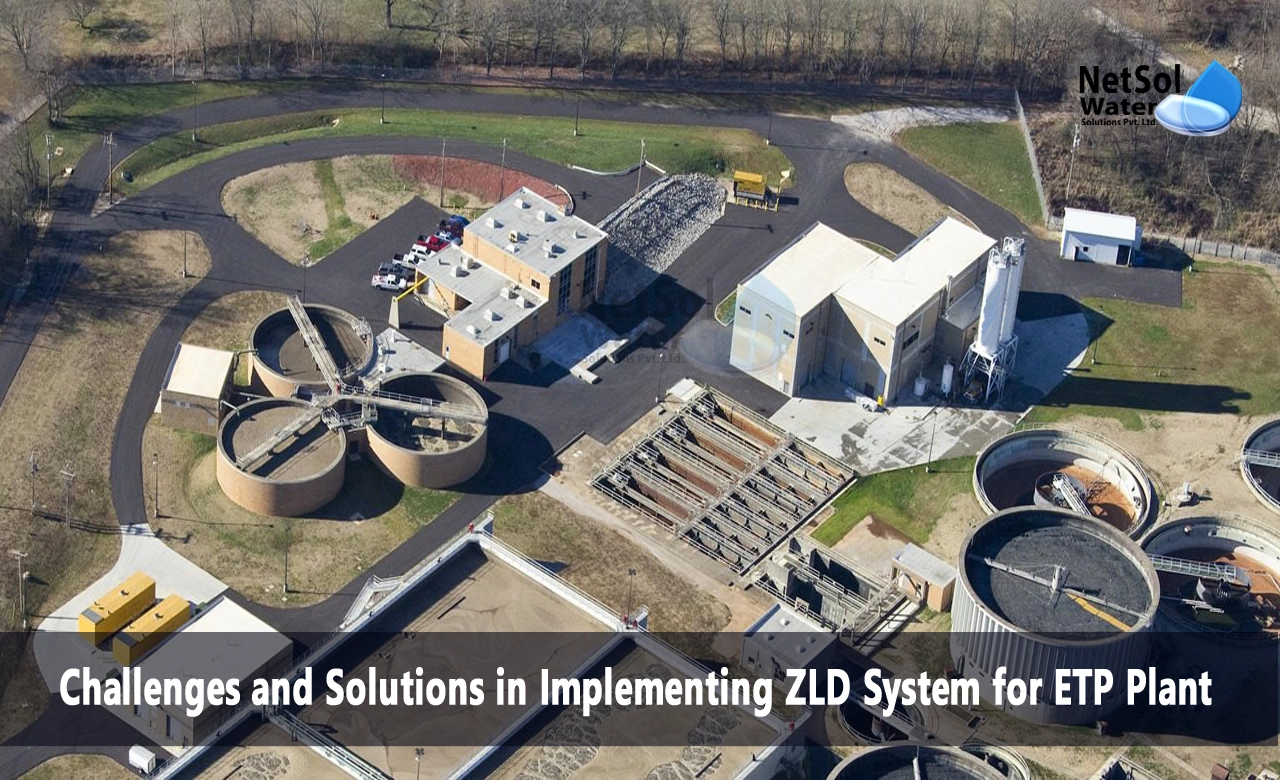Challenges and Solutions in Implementing ZLD System for ETP Plant
Zero Liquid Discharge (ZLD) is an emerging approach for wastewater management that eliminates liquid waste streams. By recycling or recovering all water from the effluent, ZLD prevents wastewater discharge to the environment. This closed-loop system is becoming more important as environmental regulations tighten and water resources become scarcer. However, implementing ZLD presents numerous technological and economic challenges.
High Energy Demands
One of the biggest difficulties with ZLD is the high energy consumption required to achieve such an effective level of treatment. Conventional methods like biological treatment and media filtration can reduce contaminants to acceptable regulatory limits. However, removing the last fractions of dissolved solids to prevent any discharge takes considerably more effort.
Thermal technologies like evaporation and crystallisation are essential for ZLD. Although extremely effective, these processes require substantial heat input. The water recovery steps also demand significant power for pumping. Overall, ZLD systems can consume 10 to 50 times more energy compared to standard discharge plants. Reducing this energy footprint through process optimisation and renewable power procurement is critical for feasible ZLD adoption.
Scaling and Fouling Control
Scale formation and fouling are persistent operational problems in ZLD systems, especially for inland facilities without access to dilution from seawater intake. The high cycling of concentrated salts and minerals in brines and zero liquid waste streams leads to precipitation and deposition issues. Scaling and fouling decrease system efficiency, increase cleaning downtime and raise energy and maintenance costs.Effective antiscalant dosing and online monitoring of scaling potential are very helpful. New antifoulant coatings also show promise for reducing membrane fouling. However, chemical usage for scale and fouling control further adds to operating costs. Thorough solids removal and softening pretreatment steps help minimise scaling potential in the critical brine concentration equipment.
Brine Management and Disposal
While ZLD plants eliminate liquid discharges, they produce a new waste stream in the form of hypersaline brine concentrate. This zero-liquid waste must still be disposed of properly without environmental impact. Deep well injection is utilised in some regions but faces increased regulatory restrictions. Evaporation ponds pose contamination risks and use extensive land area.Finding sustainable brine disposal options is one of the biggest obstacles for inland ZLD plants. Emerging technologies like brine crystallisation to reduce volumes show potential. Some sites have collaborated to create regional brine treatment networks. Utilisingbrine in productive applications - such as salt or mineral recovery, dust control, and de-icing - can offset disposal costs.
High Capital Investment
Constructing an entire ZLD facility requires extensive initial capital expenditure. Thermal systems, advanced membrane filtration, crystallisers and spray dryer equipment carry very high price tags. Pretreatment and brine concentration processes multiply the needed installation footprint. CAPEX costs for a ZLD plant can be 4 to 10 times higher than for a conventional wastewater plant.
The high investment demands make adopting ZLD prohibitive for many smaller facilities. Larger operations can leverage economies of scale. Exploring modular or mobile ZLD systems may provide more affordable options. Implementing ZLD in phases can also help defer upfront costs over time as regulations evolve.
Pretreatment Requirements
The extreme level of treatment needed for ZLD requires extensive and consistent pretreatment upstream. Suspended solids must be minimised to prevent fouling and scaling. Strict contaminant limits protect the sensitive thermal systems and membranes. High TDS levels make brine concentration more challenging.
Thorough screening, softening, coagulation, flocculation and filtration are standard for ZLD-influent conditioning. Some facilities implement biological pretreatment as well. Careful source separation and isolation of high-strength waste streams help maintain consistent ZLD plant loading. Strict plant integration and pretreatment monitoring ensure the protection of the ZLD processes.
Operational Optimization
Operating a ZLD facility requires continuous tuning and optimisation. Production volumes, water chemistry, environmental conditions, and pretreatment effectiveness fluctuate over time. Reaching the maximum attainable recovery levels demands constant attention and adjustment.Online monitoring and data collection across the plant are invaluable for identifying optimisation opportunities. Changes to energy and chemical usage, equipment sequencing, backwashes and cleaning routines can incrementally improve performance. Staff training and management of operating procedures are keys. Partnering with equipment vendors also provides valuable optimisation guidance.
Conclusion
Transitioning to ZLD is a major endeavour for any effluent treatment facility. The stringent discharge requirements demand a completely new technological approach with high costs and operational challenges. However, the environmental benefits and water conservation value make ZLD adoption increasingly necessary and attractive. Utilising the best practices outlined here for pretreatment, scaling control, energy management, redundancy, and ongoing optimisation can pave the path to successful ZLD implementation. With careful planning and execution, ZLD provides a sustainable wastewater management strategy for even the most severe discharge situations.
Netsol Water is Greater Noida-based leading water & wastewater treatment plant manufacturer. We are industry's most demanding company based on client review and work quality. We are known as best commercial RO plant manufacturers, industrial RO plant manufacturer, sewage treatment plant manufacturer, Water Softener Plant Manufacturers and effluent treatment plant manufacturers. Apart from this 24x7 customer support is our USP. Call on +91-9650608473, or write us at enquiry@netsolwater.com for any support, inquiry or product-purchase related query.



